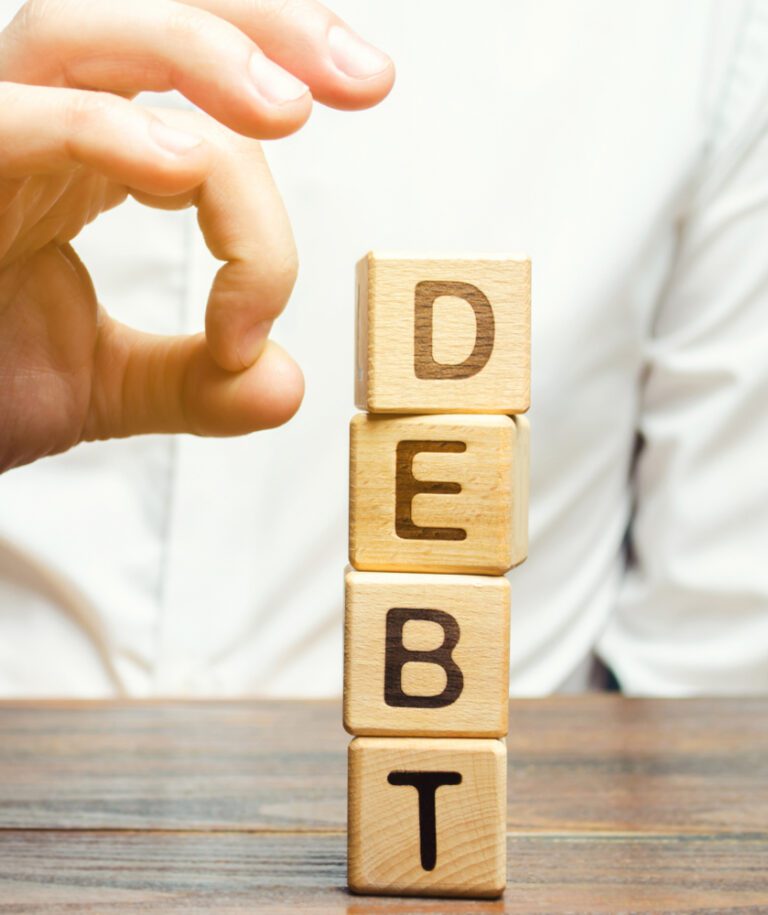If you’re struggling with debt, an Individual Voluntary Arrangement (IVA) might have come up in your research as a possible debt solution. Maybe you’ve heard about them from friends, seen them mentioned online, or been told about them by a creditor.
But what actually happens when you enter into an IVA? How does the process work from start to finish, and how does it help you deal with your debts?
What is an Individual Voluntary Arrangement (IVA)?
An IVA is a formal, legally binding agreement with your creditors to repay your debts in a way that’s affordable for you. Rather than trying to juggle multiple payments to different creditors each month, you make one monthly payment based on what you can realistically afford after your essential living costs are covered.
The arrangement is set up and supervised by a licensed Insolvency Practitioner. IVAs typically last five to six years, and once completed, any remaining qualifying unsecured debt is legally written off.
IVAs are available to residents of England, Wales, and Northern Ireland. Scotland has a different system called a Protected Trust Deed.
How do IVAs work?
The IVA process involves several stages, from your initial consultation through to completion. Here’s what happens at each step:
Initial Consultation
The first step is to seek debt advice from a debt consultant, who will review your financial situation in detail – your income, expenses, assets, and debts. They’ll calculate how much you can realistically afford to pay towards your debts each month. If you decide to get an IVA, your case will be passed to a licensed Insolvency Practitioner who will handle the formal process.
Preparing Your IVA Proposal
If an IVA looks like the right option, your Insolvency Practitioner will prepare a formal proposal to your creditors. This document outlines your financial situation, explains why you’re unable to repay your debts in full, and sets out what you’re offering to pay instead.
You’ll need to provide various documents to support your proposal, including recent payslips or proof of income, bank statements, details of all your debts and creditors, and information about any assets you own. The quicker you can provide these, the faster the process moves forward.
Creditor Approval
Once your proposal is ready, your Insolvency Practitioner sends it to all your creditors. They have a minimum of 14 days to review it and vote on whether to accept it. You need at least 75% of your creditors (by debt value) who participate in the vote to agree for your IVA to be approved.
Most creditors will accept a reasonable proposal because they recognise that an IVA gives them a better chance of recovering at least some of what you owe, rather than receiving nothing at all if your situation deteriorates further. However, creditors may request modifications or additional information before agreeing.
Your IVA Begins
Once approved, your IVA agreement becomes legally binding. From this point:
- Your creditors must stop contacting you, and cannot take legal action
- All interest and charges on your debts are frozen
- Debt collectors and bailiffs cannot pursue you
- You begin making your agreed monthly payment to your Insolvency Practitioner, who distributes the money to your creditors to pay off your debts
You’ll typically make these repayments by standing order, so they’re automatically taken from your account each month.
Annual Reviews
Each year, your Insolvency Practitioner will review your circumstances to make sure your payment amount is still appropriate. If your income has increased, you may need to pay more. If it’s decreased, your payment might be reduced. The aim is always to keep your IVA affordable whilst making sure you’re paying what you reasonably can.
Completion
After five to six years of making payments and fulfilling all your obligations, you’ll successfully complete your IVA. Any remaining qualifying unsecured debt is legally written off**, and you receive a completion certificate. You’re then free from those debts for good.
Who qualifies for an IVA?
Not everyone will be eligible for an IVA, and it’s not always the right solution for every debt situation. Generally, you’ll need to meet specific criteria if you can’t pay your debts in full.
You’ll typically need to:
- Owe at least £7,000 in unsecured debts to two or more creditors
- Have a regular income that allows you to pay your debts through monthly payments
- Be a resident of England, Wales, or Northern Ireland
- Have disposable income after covering your essential living expenses
Your income can come from various sources – employment (full-time or part-time), self-employment, pension income, or certain benefits. What matters is that you have enough money left over each month after paying for essentials like rent or mortgage, food, utilities, and travel costs.
The debts included in the IVA must be unsecured. This means they’re not tied to an asset like your home or car. Common debts that can be included are:
- Credit cards
- Personal loans
- Payday loans
- Overdrafts
- Store cards
- Council tax arrears
Secured debts like your mortgage or car finance can’t be included in an IVA. You’ll need to continue paying these separately. Similarly, some debts like student loans, court fines, and child maintenance arrears cannot be included.
In some cases, you may be able to offer a lump sum instead of monthly payments.
Why would someone choose an IVA?
People choose IVAs for different reasons, but they all share the same goal – finding a manageable way to deal with debts that have become overwhelming and getting debt relief.
Legal Protection from Creditors
Once your IVA is approved, your creditors are legally prevented from contacting you or taking further action against you. This means no more phone calls, no more threatening letters, and no risk of bailiffs turning up at your door. For many people, this immediate relief from creditor pressure is life-changing.
Affordable Monthly Payments
Your IVA payment is based on what you can genuinely afford after covering your essential living costs – not what your creditors demand. This means you can keep a roof over your head, feed your family, and pay your bills whilst still making progress towards clearing your debts.
Interest and Charges Frozen
From the moment your IVA is approved, all interest and charges on your included debts are frozen. This stops your debt from continuing to grow, which can feel like you’re finally making headway rather than treading water.
Remaining Debt Written Off
After you’ve completed your IVA term (typically five to six years) and fulfilled all your obligations, any remaining qualifying unsecured debt is legally written off. Depending on your circumstances, this could mean a significant part of your debts – potentially up to 73%* – doesn’t need to be repaid.
Keep Your Home and Assets
Unlike bankruptcy, an IVA typically allows you to keep your home and car, subject to creditor approval. Whilst you may be asked to try to release equity from your property in the final year of your IVA, you won’t automatically lose your home or essential assets.
Avoid Bankruptcy
An IVA offers many people a way to deal with their debts without the restrictions and consequences that come with bankruptcy. Unlike creditors who could make you bankrupt through court action, an IVA gives you control. You can continue in most professions without limitation, remain a company director, and maintain more control over your financial situation.
Clear End Date
Unlike informal arrangements, where you could be paying off debts for decades, an IVA has a fixed term. You know exactly when you’ll be debt-free, which makes it easier to plan for your future and see light at the end of the tunnel.
Will an IVA impact my credit history?
Yes – an IVA will affect your credit rating while you’re paying into it. When your IVA is approved, it will be recorded on your credit report for six years from the start date and will also appear on the Individual Insolvency Register.
During this time, getting credit will be more difficult. Most mainstream lenders won’t approve applications for credit cards, loans, or mortgages while you have an IVA on your file. You’re also restricted from taking on credit over £500 without your Insolvency Practitioner’s permission – this is one of the key terms of an IVA. Your IVA will be visible to lenders when they check your credit reference file.
However, if you’ve been missing payments or struggling with debts for some time, your credit score has probably already taken a hit. An IVA won’t make things significantly worse – and it gives you a clear path to eventually rebuilding your credit.
Once your IVA is complete and the six years have passed, the IVA will be removed from your credit file. You can then start rebuilding your credit history from a clean slate.
It’s worth noting that other debt solutions affect your credit in similar ways. A Debt Management Plan appears on your credit file for six years, just like an IVA – but without the legal protection or debt write-off. Bankruptcy also stays on your credit file for six years.
If you’re considering applying for an IVA, it’s important to understand that the IVA application process typically takes four to six weeks from start to finish. Once you decide to go ahead with an IVA and set up an IVA with a licensed Insolvency Practitioner, your details will be registered with the Insolvency Service, which oversees all formal insolvency procedures in England and Wales.


